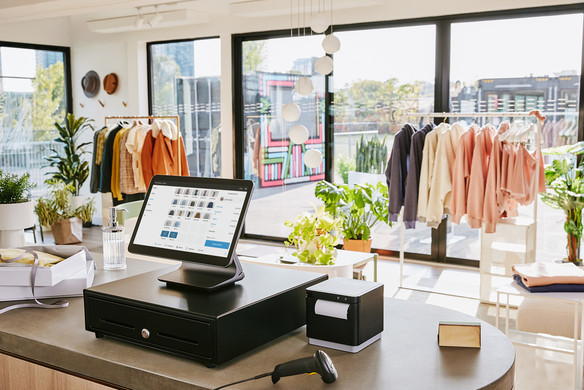Table of contents
This article is for educational purposes and does not constitute legal, financial, or tax advice. For specific advice applicable to your business, please contact a professional.
You’ve decided on an idea for your new business, nailed your business plan, and started the necessary steps for registering, taxes, licenses, and permits. Now, it’s time to find a location.
Where do you start, how much will a space cost, and how do you find the right location for your business? Here are seven tips to help guide you through the process.
1. Pick your business location type
For starters, not all businesses need a physical location. If you’re just getting ramped up and trying to limit initial overhead, consider if selling online and shipping your products is the right first step. As your business grows, you can also grow your physical footprint.
But there’s something special about building your own space. These location types can help you choose a direction:
- Brick and mortar: Whether it’s a retail storefront or a full-service restaurant, a traditional brick-and-mortar location gives customers a standalone space to check out your offerings.
- Warehouses and industrial spaces: Need your own area for manufacturing and distributing your products? Warehouse spaces with access to efficient transportation options can make that possible.
- Home office: Running your business from home likely still requires specific permits and zoning considerations, but it significantly reduces your up-front operating costs.
- Mobile: Will your business succeed by going on the road? Food trucks, retail pop-ups, and stands at markets in collaboration with other businesses are great ways to build interest in your work — and you can always transition to a larger brick-and-mortar operation down the line if it makes sense.
- Commercial office space: If your business won’t rely on foot traffic, a standard office space provides convenience with less of a buildout and fewer equipment needs.
2. Set a budget
If you’re renting your space from a landlord, the cost per square foot that goes into your monthly rent likely will include factors such as the city’s market rate, the desirability of the location, and the current state of the space, creating a large range of possibilities from $10 per square foot up to more than $70. Consulting local real estate brokers and fellow business owners can help you get a better understanding of what to expect with rent.
Some key questions to run through as you consider the cost and your budget.
- What are the terms of the lease? How many additional charges — including maintenance fees, insurance, utilities, revenue percentages — are included? How have lease renegotiations gone for other business owners with this landlord?
- Does your business plan project enough profit to support the terms of the lease?
- Is your location creating extra costs for travel and shipping?
- If you’re starting a home office, what will the additional equipment and hardware cost you?
- Is it worth taking out a small business loan to help support your physical location?
- Will this space grow with you or will you need to invest in a new location if you reach a certain level of success?
3. Consider your hardware and equipment needs
A location might look perfect when it’s empty, but take time to consider if it is practical. Will all the hardware and equipment you need to run your business fit into the space? Are all of the utilities functioning properly or will that incur an additional cost? How will the space hold up over time? Is there room for you, your staff, your customers, and everything you need to fully operate your business?
Stop to map it out and answer these questions before making a decision.
4. Align with your branding
Customers inevitably associate your business with the neighborhood and building style you select. Do you want to project a groundbreaking, forward-thinking message? Is there a modern space in a neighborhood with similar businesses to yours? Or do you plan on having a classic space that will rely on traditional downtown foot traffic? Also, do you have the budget to do a full redesign to match your aesthetic, or do you need to keep the space as is?
Going into your search with a strong understanding of your company’s brand can help you narrow down your search to specific areas and types of buildings.
“You have to be okay with finding new audiences and understand exactly what that means,” said Chris Duncan of Honor Roll Clothing. “If you’re in a side of town where high-end goods is not going to do well, then you need to move, because you started your brand with a reason and a purpose, and you want to convey that. So if your brand is for a lower income, there is no disrespect to that, then that’s where you need to be. You don’t need to be in the higher-price side of town, because there’s a certain perception — all of this comes into buyer psychology. So you have to be okay with making the moves for your brand.”
5. Factor in competition
Your business location search won’t happen in a vacuum. Search for where your top competitors are located, how their spaces work for them, and how you can fit in. There are benefits to offering similar but improved options to customers near your competition, but that also comes with the risk of not breaking through.
And remember that you aren’t only competing with similar businesses. Having an appealing, accessible space will help you stand out among any other retail and entertainment options. That means parking and public transportation access, as well as your proximity to likely customers, should play a role in your decision as well.
6. Plan for staffing
If your business needs a staff, don’t wait until you’ve already finalized a location to begin thinking about the hiring process. Having a desirable location that’s accessible to your likely pool of talent will help you retain and attract top talent. Little things that are inconvenient to employees can quickly add up, so it’s better to get ahead of those concerns before you select a space.
7. Look into taxes, regulations, and government incentives
Neighborhoods are typically zoned for specific commercial or residential uses, so do your research on what’s allowed where before you settle on an area. Also look into the different taxes and incentives offered at the local, state, and federal levels for new businesses. The SBA is a good resource. You can find information on incentives and benefit programs tied to where and how you open your business, the technology and energy efficiency you use, and how you plan to hire.
![]()











